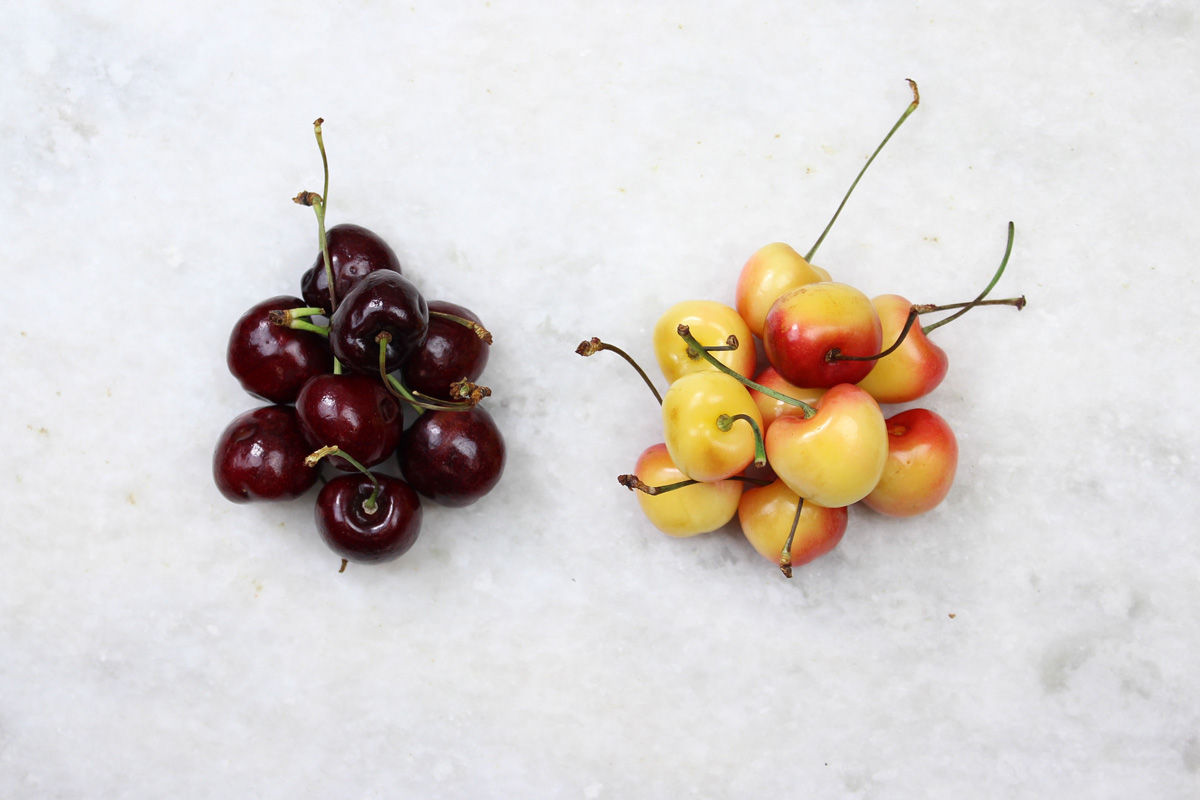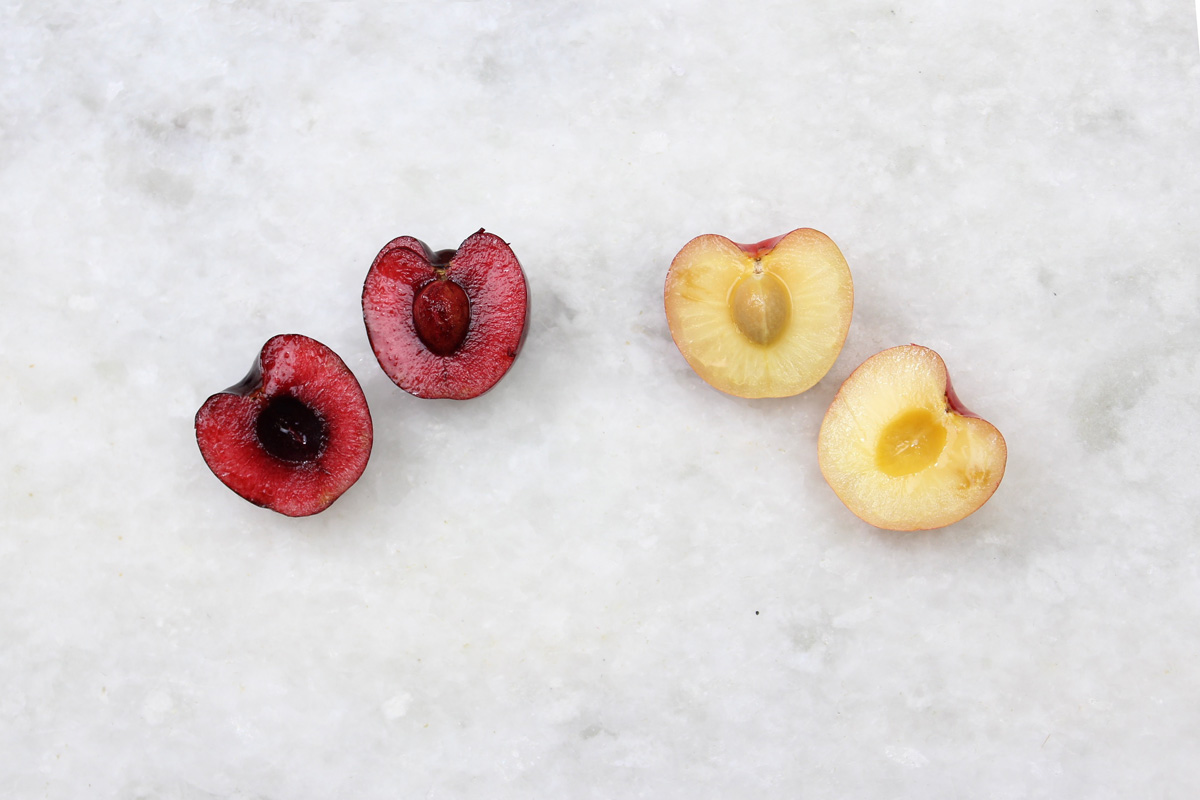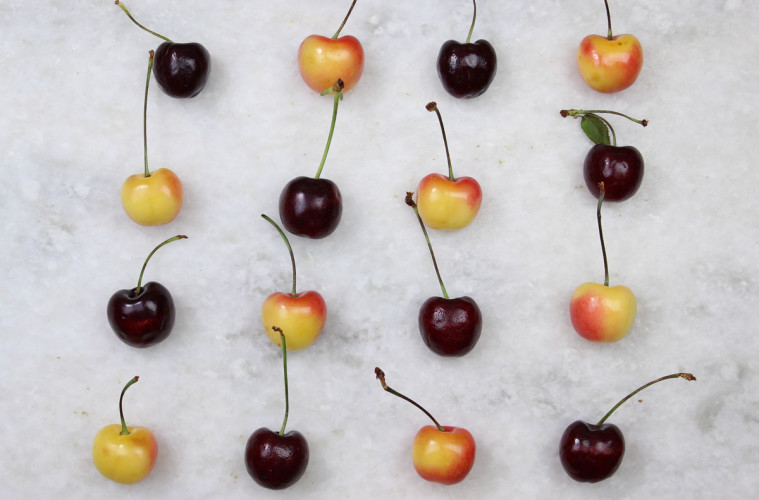Growing up in Michigan, I feel some sort of affinity-by-association with cherries. The season may be coming to an end, but fortunately for all the cherry-lovers out there the sweet fruits are still dotting the rows of produce with their distinctive reds, pinks, and yellows. Highly sweet and juicy, cherries have often graced my table as a healthy snack choice for my family and me, but when confronted with the choice of Bing cherries or Rainier, I have to admit I can’t say the choice was made with discretion. When I first saw the golden cherries, I grabbed them because of their novelty.
To expand my knowledge, I decided to learn what makes Bing and Rainier cherries tick and identify their differences. Should the day come when someone asks me which one I prefer to eat I will be able to answer with a litany of reasons! Interestingly enough, the two species are both offspring of the parent tree Prunus avium, often called the “bird cherry” for its small fruits that attract birds in summertime. So the two, though different aesthetically, are quite closely related.
Interestingly enough, the two species are both offspring of the parent tree Prunus avium, often called the “bird cherry” for its small fruits that attract birds in summertime. So the two, though different aesthetically, are quite closely related.
Bing Cherries
Those deep mahogany beauties with a shiny skin and firm fruit are the country’s favorite little cherries. Usually a specimen of exquisite perfection, Bing cherries feature flawless skins and amazing flavor. Sort of like the MVP of cherries, and it shows. Every year, more of these beautiful cherries are sold than any other cherry varietal.
When it comes to eating, their sweet, firm texture works perfectly in jams, sauces, tarts, and oatmeal. Their deep red hue adds delicious color to ice creams and yogurts. Rainier Cherries
Rainier Cherries
Named after Mt. Rainier in Washington State, Rainier cherries offer a thin skin with thick creamy-yellow flesh. These cherries are a cross between Bing and Van cherries sometimes known as the “white cherry,” which is unusual considering that both Bing and Van cherries are notably deep red in color. They are also usually larger than their fellow cousins.
When it comes to eating, Rainier cherries have higher sugar content than bing cherries, and in fact have one of the highest contents of all the stone fruits including plums, peaches and apricots. Their coloring is unequivocally unique, providing a one-of-a-kind aesthetic treat to pies, ice creams, and yogurt.
Their higher price can often be a deterrent, however. Their lighter color and sweet flavor allows them a “premium fruit” label that often results in prices ranging from $5-7 per pound.
The Conclusion
Both varieties of cherries offer great dietary benefits are rich in dietary fiber and Vitamin C. Additionally they are low in saturated fats, cholesterol and sodium. I love the look of Rainiers and Bings together so I think I won’t play favorites but buy both to create a mixed bag. They make a pretty pair!
Cherry on Top: let your cherries warm up to room temperature before popping them in your mouth to release their full flavor!

